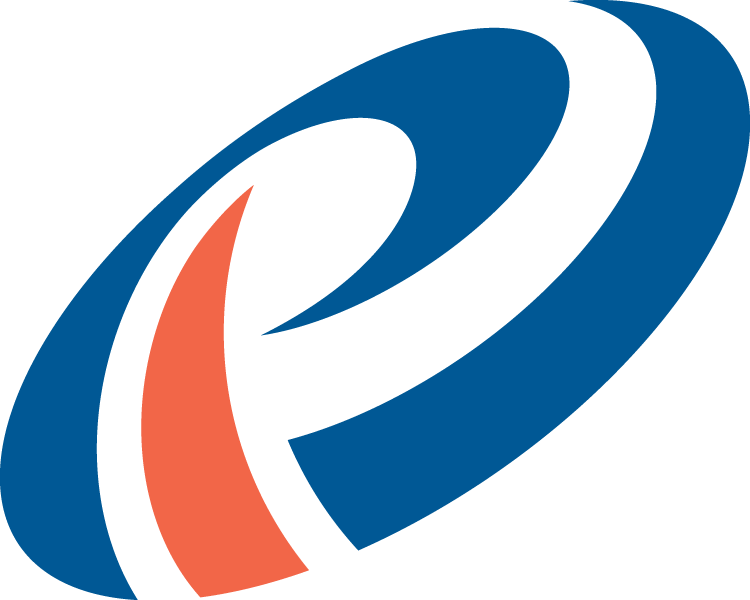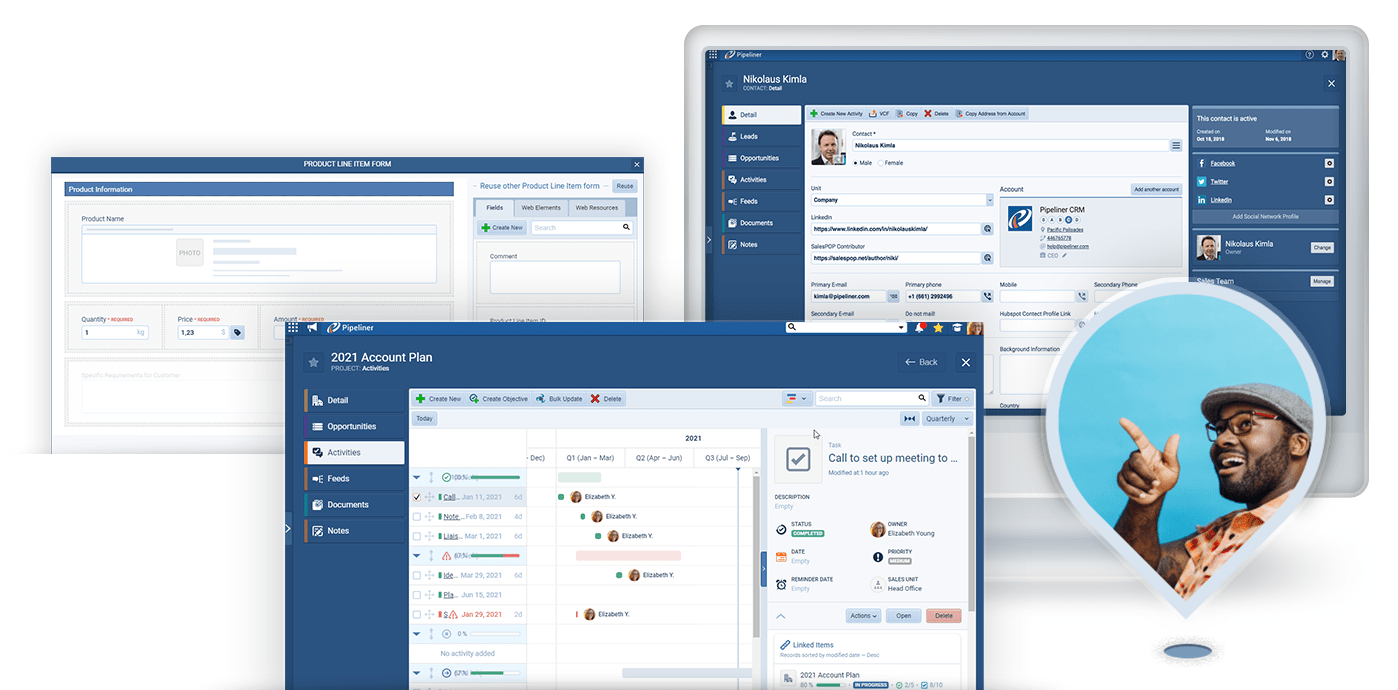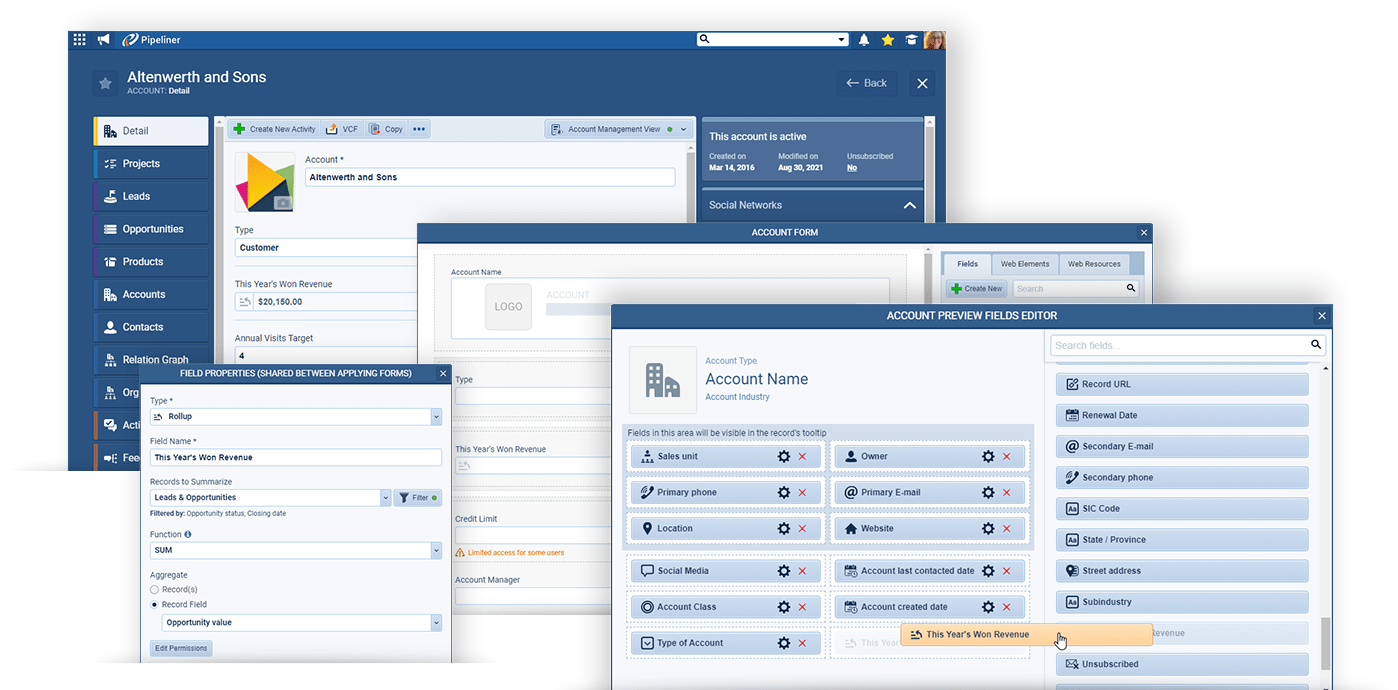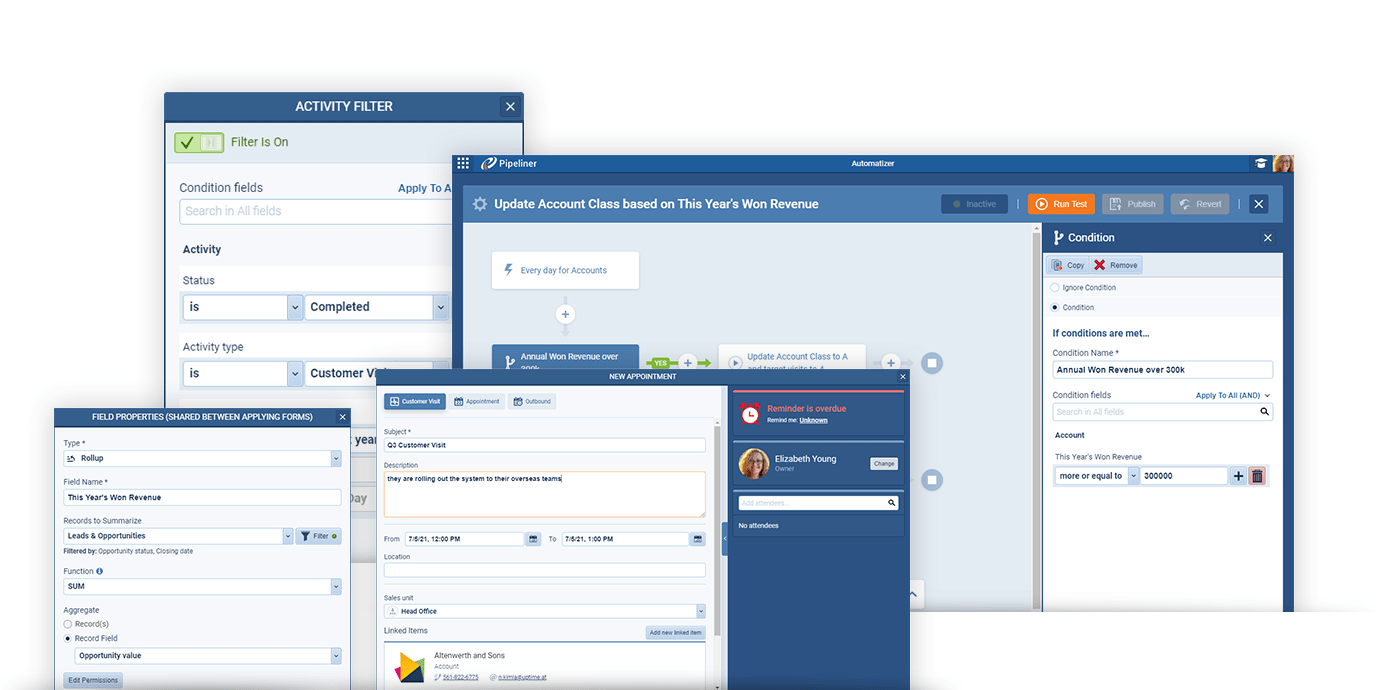We’ve made fields and forms far easier than other CRMs!
No programming is required, and this function, along with other administration, can be learned in a few hours by anyone who is computer-literate. Everything is done by drag and drop for creating a form.

Fields and forms are utilized with Pipeliner CRM entities—which is how we refer to different CRM functions.

These 9 Entities act as dataData Data is a set of quantitative and qualitative facts that can be used as reference or inputs for computations, analyses, descriptions, predictions, reasoning and planning. storage for their own individual areas:
AccountAccount Account refers to a record of primary and background information about an individual or corporate customer, including contact data, preferred services, and transactions with your company.
Contact
LeadLead Lead refers to a prospect or potential customer (who can be an individual or organization) that exhibits interest in your service or product; or any additional information about such entity.
Opportunity
Task
Appointment
ProductProduct Product refers to anything (an idea, item, service, process or information) that meets a need or a desire and is offered to a market, usually but not always at a price.
Product Line Items
Projects
Pipeliner CRM Forms
Most of the entities in Pipeliner CRM have multiple customizable forms available, which means you have multiple visualizations of data points. When you are setting up your system, you must first decide which forms you’ll need for each entity and how you will use them. Within a task, a form might be a call, an email, a survey, or a support ticket. Different forms might be used for various departments.
Or, in another example, you might have a partner program, and partners might be handled differently.


Pipeliner CRM Fields
Within each form, you can create as many different customizable fields as you wish. These fields can be made accessible to varying degrees: not accessible at all, read-only, or with read-write permissions. We’ve done this because some roles will require access to specific fields and some will not, just as there will be various departments that will need access and others that will not.
Data security is always a prime concern, so only certain positions or departments in a company should have privileges.
Project Management
Project Management allows you to create different types of projects, utilizing different kinds of forms.

As with other entities, forms can be edited and customized. Fields—such as rollup fields which can be configured to aggregate data about related records, and lookup fields, which are configured using filter criteria—can be customized and added to forms.
Once a project form is created on the back end, it is available as a templateTemplate Template is a generic file with a framework showing the standard sections or features of a specific kind of document, used to create a new document of the same type faster and easier. on the front end. The project would then have process-driven steps. The project can be added to an account or opportunity, or it can even be used by itself as a standalone project. Within an opportunity, a project could be a particular customerCustomer Customer is an individual or an organization that purchases a product or signs up for a service offered by a business.’s buying process.
It could also be an onboardingOnboarding Onboarding is the process or act of introducing a new customer to your product or service; or integrating a newly hired employee into your workforce or team. process, utilized with any new account.
